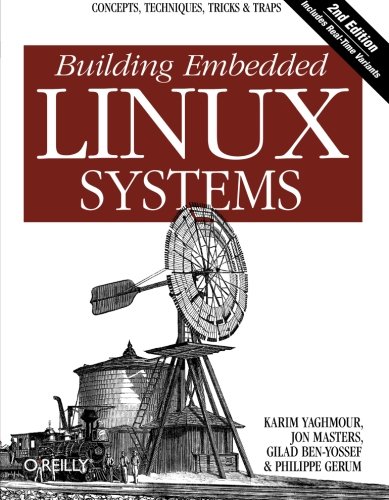There’s a great deal of excitement surrounding the use of Linux in embedded systems — for everything from cell phones to car ABS systems and water-filtration plants — but not a lot of practical information. Building Embedded Linux Systems offers an in-depth, hard-core guide to putting together embedded systems based on Linux.
Updated for the latest version of the Linux kernel, this new edition gives you the basics of building embedded Linux systems, along with the configuration, setup, and use of more than 40 different open source and free software packages in common use. The book also looks at the strengths and weaknesses of using Linux in an embedded system, plus a discussion of licensing issues, and an introduction to real-time, with a discussion of real-time options for Linux.
This indispensable book features arcane and previously undocumented procedures for:
- Building your own GNU development toolchain
- Using an efficient embedded development framework
- Selecting, configuring, building, and installing a target-specific kernel
- Creating a complete target root filesystem
- Setting up, manipulating, and using solid-state storage devices
- Installing and configuring a bootloader for the target
- Cross-compiling a slew of utilities and packages
- Debugging your embedded system using a plethora of tools and techniques
- Using the uClibc, BusyBox, U-Boot, OpenSSH, thttpd, tftp, strace, and gdb packages
By presenting how to build the operating system components from pristine sources and how to find more documentation or help, Building Embedded Linux Systems greatly simplifies the task of keeping complete control over your embedded operating system.

